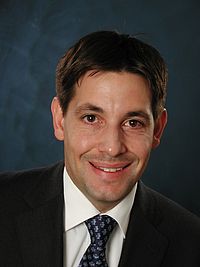Prof. Dr. Wolfram Bauer
Project leader

Leibniz-Universität Hannover
E-mail: bauer(at)math.uni-hannover.de
Telephone: +49 511 762-2361
Project
6Spectral Analysis of Sub-Riemannian Structures
Publications within SPP2026
H-type foliations (????,H,g) are studied in the framework of sub-Riemannian geometry with bracket generating distribution defined as the bundle transversal to the fibers. Equipping ???? with the Bott connection we consider the scalar horizontal curvature κ as well as a new local invariant τ induced from the vertical distribution. We extend recent results on the small-time asymptotics of the sub-Riemannanian heat kernel on quaternion-contact (qc-)manifolds due to A. Laaroussi and we express the second heat invariant in sub-Riemannian geometry as a linear combination of κ and τ. The use of an analog to normal coordinates in Riemannian geometry that are well-adapted to the geometric structure of H-type foliations allows us to consider the pull-back of Korányi balls to ????. We explicitly obtain the first three terms in the asymptotic expansion of their Popp volume for small radii. Finally, we address the question of when ???? is locally isometric as a sub-Riemannian manifold to its H-type tangent group.
Related project(s):
6Spectral Analysis of Sub-Riemannian Structures
On the seven dimensional Euclidean sphere S^7 we compare two subriemannian structures with regards to various geometric and analytical properties. The first structure is called trivializable and the underlying distribution T is induced by a Clifford module structure of R^8. More precisely, T is rank 4, bracket generating of step two and generated by globally defined vector fields. The distribution Q of the second structure is of rank 4 and step two as well and obtained as the horizontal distribution in the quaternionic Hopf fibration ????3↪????7→????4. Answering a question in arXiv:0901.1406 we first show that Q does not admit a global nowhere vanishing smooth section. In both cases we determine the Popp measures, the intrinsic sublaplacians ΔTsub and ΔQsub and the nilpotent approximations. We conclude that both subriemannian structures are not locally isometric and we discuss properties of the isometry group. By determining the first heat invariant of the sublaplacians it is shown that both structures are also not isospectral in the subriemannian sense.
| Journal | J. Geom. Anal. |
| Volume | 32 |
| Pages | 37pp |
| Link to preprint version |
Related project(s):
6Spectral Analysis of Sub-Riemannian Structures
We determine the spectrum of the sub-Laplacian on pseudo H-type nilmanifolds and present pairs of isospectral but non-diffeomorphic nilmanifolds with respect to the sub-Laplacian. We observe that these pairs are also isospectral with respect to the Laplacian. More generally, our method allows us to construct an arbitrary number of isospectral but mutually non-diffeomorphic nilmanifolds. Finally, we present two nilmanifolds of different dimensions such that the short time heat trace expansions of the corresponding sub-Laplace operators coincide up to a term which vanishes to infinite order as time tends to zero.
| Journal | Math. Z. |
| Publisher | Springer |
| Volume | 297 |
| Pages | 557-583 |
| Link to preprint version |
Related project(s):
6Spectral Analysis of Sub-Riemannian Structures
Pseudo H-type Lie groups \(G_{r,s}\) of signature (r,s) are defined via a module action of the Clifford algebra \(C\ell_{r,s}\) on a vector space V≅\(\mathbb{R}^{2n}\). They form a subclass of all 2-step nilpotent Lie groups and based on their algebraic structure they can be equipped with a left-invariant pseudo-Riemannian metric. Let \(\mathcal{N}_{r,s}\) denote the Lie algebra corresponding to \(G_{r,s}\). A choice of left-invariant vector fields [\(X_1, \ldots, X_{2n}\)] which generate a complement of the center of \(\mathcal{N}_{r,s}\) gives rise to a second order operator
\(\Delta_{r,s}:=\big{(}X_1^2+ \ldots + X_n^2\big{)}- \big{(}X_{n+1}^2+ \ldots +X_{2n}^2 \big{)}\)
which we call ultra-hyperbolic. In terms of classical special functions we present families of fundamental solutions of \(\Delta_{r,s}\) in the case r=0, s>0 and study their properties. In the case of r>0 we prove that \(\Delta_{r,s}\) admits no fundamental solution in the space of tempered distributions. Finally we discuss the local solvability of \(\Delta_{r,s}\) and the existence of a fundamental solution in the space of Schwartz distributions.
| Journal | Adv. Math. |
| Book | 369 |
| Pages | 1-46 |
| Link to preprint version |
Related project(s):
6Spectral Analysis of Sub-Riemannian Structures
| Journal | Anal. Math. Phys. |
| Publisher | Birkhäuser |
| Book | 8 |
| Volume | 4 |
| Pages | 493-520 |
| Link to preprint version |
Related project(s):
6Spectral Analysis of Sub-Riemannian Structures
We construct a codimension 3completely non-holonomic subbundle on the Gromoll–Meyer exotic 7-sphere based on its realization as a base space of a Sp(2)-principal bundle with the structure group Sp(1). The same method can be applied to construct a codimension 3 completely non-holonomic subbundle on the standard 7-sphere (or more general on a (4n +3)-dimensional standard sphere). In the latter case such a construction based on the Hopf bundle is well-known. Our method provides a new and simple proof for the standard sphere S7.
| Journal | Appl. Anal. 96 (2017), 2390–2407. |
| Link to preprint version |
Related project(s):
6Spectral Analysis of Sub-Riemannian Structures

